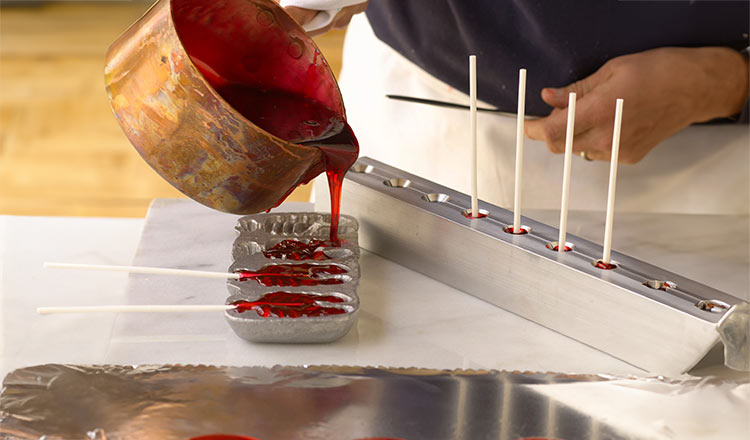Using molds to make hard candies is very easy and requires only the desired molds suitable for use with sugar. There are different types of molds available that can be used with hard candy; metal molds, either heavy cast molds or lighter stamped molds, are the most common variety, and the most durable. These molds may be modern, but antique metal candy molds are also available.
Some molds are designed to be used with sticks to create lollipops, and others are intended for use without sticks. Special silicone molds may also be found for use with hard candy. These molds are designed to tolerate the high heat of cooked sugar and have the advantages of flexibility and not requiring oiling. Rubber or plastic molds should be used with hard candy only if they are designed specifically for that purpose.
- Clean, dry, and lightly oil molds to prevent the sugar from sticking. Vegetable oil is suitable for this purpose. Note that silicone molds do not require oil.
- Pour the thickened sugar into the prepared molds. Pour slowly to control the sugar.
- Insert sticks if desired. If making lollypops, insert sticks as the sugar begins to cool.
- Allow the candy to cool. The hot sugar must cool entirely before it can be released from the molds, which can take a surprisingly long time, especially with larger molds. Refrigeration can speed the process, but the molds should never be refrigerated so much that the candy itself gets chilled, or it will be damaged by moisture when it is removed from the mold.
- Release from the molds. Once the molded candy has cooled to room temperature, it can be released from the mold.
- Wrap immediately to prevent damage from exposure to moisture in the air.


